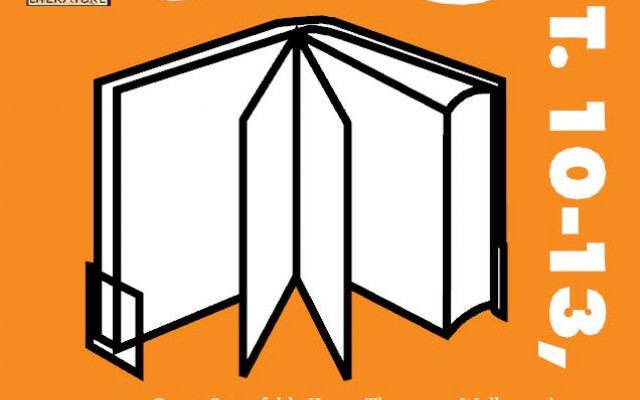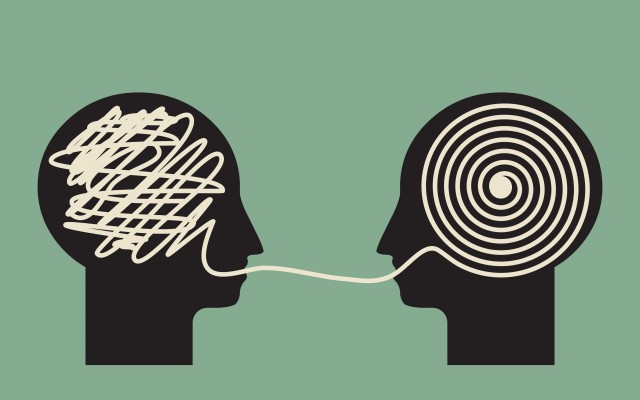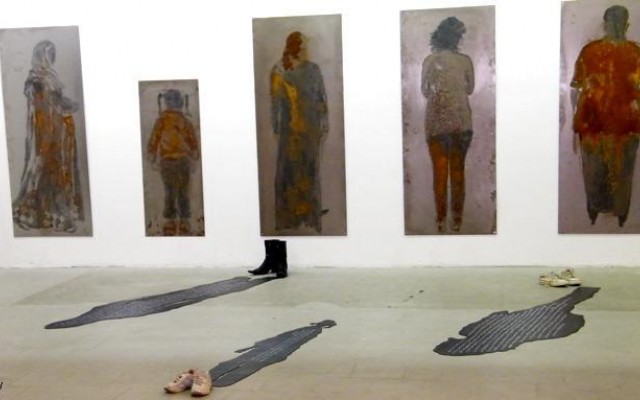In Conversation: Elizabeth Armstrong and Simone Kraus on Translation and Synesthesia

Elizabeth Armstrong, Simone Kraus
Elizabeth Armstrong is a Professor of Japanese Language in the East Asian Studies Department at Bucknell University where she has taught Japanese language and Translation Studies since 1999. She has worked as a staff interpreter in Japan and a freelance translator and interpreter in the United States. She has published two translations of works by Terayama Shūji, The Crimson Thread of Abandon (2014) and When I Was a Wolf (2018), and is currently at work on her third translation.
Simone Kraus is an experienced translator living in Germany and the Czech Republic. In 2016, she received a Katharine Bakeless Nason grant for emerging writers from the Bread Loaf Translators' Conference. She holds a doctoral degree in American Studies from the Translation School of Mainz University, Germany, where she taught courses in the translation studies program for nine years. She is the author of Prag in der amerikanischen Literatur: Cynthia Ozick und Philip Roth (Peter Lang, 2016), a book focusing on the literary representation of Prague in the works of Cynthia Ozick and Philip Roth. Simone's work has also appeared in literary magazines, including New England Review and literaturkritik.de.
Armstrong: Could you tell me a little about the language environment in which you grew up?
Kraus: My parents are originally from former Czechoslovakia. After the brutal crushing of the Prague Spring in 1968 they escaped to West Germany where I was born. Technically, Czech is my mother tongue and German is my native language, my birth language. However, I usually avoid using such categories. Instead, I like to think that German is my companion. German is my colleague, my teammate. I may not belong to it, but it belongs to me. The language environment and, thus, the cultural environment in which I grew up was defined, or rather affected, by the atmosphere of the Cold War. American military forces were still stationed in West Germany. My school was located next to a U.S. military base, with its housing area called Jefferson Village. American pop culture, American music, and English were always 'in the air.' I had a very happy childhood, growing up in the 1980s and 1990s. Languages were an integral part of the educational system, including English, French and Latin. On the whole, our school provided a great learning environment for languages. As far as my Czech background is concerned, I was constantly aware of the problems and sorrows that my parents had to deal with due to the separation from their relatives who lived behind the Iron Curtain. Even though my parents spoke Czech at home, I refused to speak it. It was silly, but for some reason I projected the idea of a 'false' language spoken by the 'enemy' onto my mother tongue. Later, in my adult life, my perspective changed. Against the backdrop of three major political events, i.e. the end of the Cold War, the German Reunification, and the beginning of the so-called European integration, I began to study the rich history of Bohemia and tried to learn more about the Czech language.
Armstrong: How did you navigate the language neural networks of all those languages?
Kraus: What a great question! The verb "to navigate" implies the idea of finding your position or the direction you need to go in by using a map. Maybe I should say that the languages in my life have always navigated me. They are the maps that give me orientation. Each of the languages is a particular system of communication. Sometimes, these systems overlap; sometimes they compete. In general, they complement each other in a good way. Last spring, I did an interview with a young emerging poet and essayist from the U.S. who also lives in a multilingual environment. We agreed that the term "linguistic kaleidoscope" captures the essence of living in and with different languages.
Armstrong: In the world of Japanese/English translation, there is a hard and fast rule that you only translate into your first language/mother tongue. Does that attitude exist in your translation circles? What are your own thoughts on this subject?
Kraus: Yes, that attitude still exists in my translation circles. I studied English (my first foreign language) and French (my second foreign language) at the translation school of Mainz University in Germany. It is one of the oldest institutions for translation studies in Europe. Translation classes for my first foreign language went both ways, i.e. from and into English. However, the focus was on translating from English into German. It was a given that, after graduation, translators would work into their mother tongues/native languages. In my second year, I realized that I prefer translating into English. And much later, when I began to work as a freelancer, most assignments I did were actually translations into English. In an interview for the magazine The Millions, Aron Aji once said that "one's proficiency in a language has little to do with one's birthplace. Proficiency requires training, study, and practice." Indeed, proficiency is a complex topic. It was in the vast discrepancy between the mother tongue concept and the practical requirements of the non-academic world that I had to find and create my own translation space. As for translation studies programs—I hope the awareness for the skills of people who are raised bilingual or multilingual and who want to learn the craft of translation will increase. The concept of translating into one's mother tongue should be approached more critically.
Armstrong: How does being a synesthete affect how you interact with each of the languages you speak either as an individual or as a professional?
Kraus: Thank you for this question. My way of processing letters and words in my mind is known as a phenomenon called "synesthesia." In my case, grapheme-color synesthesia. It is defined as a perceptual condition in which the stimulation of one sense triggers an automatic experience in another sense. To me, synesthesia is the blending of senses that allows me to see the visible and feel the invisible at the same time. My colors are always with me. They give me a sense of direction and reassurance. I would like to use the verb "to navigate" again. The colors that I feel navigate me, regardless of the 'real' language that I speak or work in.
Armstrong: Do you think that your views on translation are deeply different from others, being a synesthete?
Kraus: I don't know. Speaking in colors may be like speaking a language—a language that is spoken inside one's body. For as long as I can remember, I have lived with colors that are not visible to other people: letters, words, names, numbers—they are alive to my imagination as colorful creatures. I don't see them in my mind's eye. I feel them, or rather, it is a combination of feeling and knowing. Where are the colors located in my body? How does it work? I don't have an answer. That is part of the pleasure of being a synesthete. I don't need a scientific explanation. Maybe it is a particular kind of intuition that is closely linked to my colors. This probably affects the way I approach and translate texts.
Armstrong: What would you consider the touchstones in the context of your work as a translator and writer?
Kraus: I distinguish between translating as a skill or a craft and translating as being of and in this world. Bringing both sides together is what I try to achieve. I want emerging translators to see that translation cannot exist without human experience. It cannot exist without human intelligence. Translation is life.
When I co-taught your seminar "Introduction to Translation Studies" at Bucknell University, I asked your students "what is translation?" They wrote down their ideas spontaneously. Here is what they said: humility, culture, cultural exchange, undefined, projection, destruction, compensation, art, literature, process, making connections, globalizing, communication, rewriting, fidelity, interaction, technology, exercise, commitment, jobs, personal understanding, accuracy, matching game, bridge. I loved your students' enthusiasm and openness; the exercise kicked off a lively discussion in the classroom.
To me, translating is the most intimate way of reading a text. At one point, I realized that I wanted to use my reading skills for something completely different. I wanted to have a conversation with a text without being its translator. In other words, I wanted to write my own texts. It was difficult to find my writing voice, but I have learned to let it speak. Sometimes I use it for writing about translation in a creative way.
Armstrong: In your experience so far, has there been a literary work, author or translation project that has changed the way you think about translation?
Kraus: The way I think about translation changed when I began to work with translators in the U.S. The translators' conferences that I attended as manuscript contributor in 2016 and 2017 had a profound impact on how I saw translation as a profession and as an art. I participated in two translation workshops. When everyone in the group—representing German, Japanese, Spanish, French, Portuguese, and Russian—was asked to read the piece they had translated for the workshop in the original language first, the joy we felt was palpable. By speaking the original languages, every participant turned into a different person with a different voice. The facial expressions and the gestures changed. The bond and the curiosity that I shared with other professional translators who took turns critiquing each other's work was a life-changing experience for me as a translator.
Armstrong: We have talked about a newly emerging lexicon of terms for discussing translation, as well as new perspectives on translation which are no longer bound by conventional approaches. Would you share your thoughts on this subject?
Kraus: Yes, we—as experienced translators—are full of questions. Even though you and I put our focus on different aspects, we both feel that it is crucial to bring a more holistic perspective to the field of translation. You, as a translator for Japanese, explore the challenges and limitations of binary concepts, like foreignization versus domestication, direct versus oblique. You once told me about a Japanese short story and the use of two pronouns in the text: kimi and anata. Both of these mean "you," but kimi is conventionally used by males referring to females, or by a person of higher rank to one of a lower rank. You had to find a means of expressing the gender and relationships of the characters using those pronouns in the English translation, which was very challenging. Problems such as these inspire you to investigate new terms that help cultivate a broader awareness of human possibility.
As for me, I am very interested in the overlapping of identities, i.e. being a writer and translator, or being a translator and writer. Too often, students of translation studies don't know the names of translators. And who knows the names of translators who are great writers? Does a translator's approach differ significantly from the perception of a writer-translator/translator-writer? And what about the psychological impact on the translator? A couple of months ago, I came across the book Translation and Emotion (2018) written by Séverine Hubscher-Davidson. The author argues that the role of the translator's emotions has remained almost entirely unexplored; the translator's reaction to source texts, e.g. texts dealing with grieving or death, are rarely discussed. She quotes Alice Kaplan who wrote "and while there are many theories of translation, very little has been written about the everyday psychology of translating." I agree. From my experience as a translator, freelancer and a teacher of translation, it is great to see change happening, but there is still so much to discover in terms of the human side of translation.




